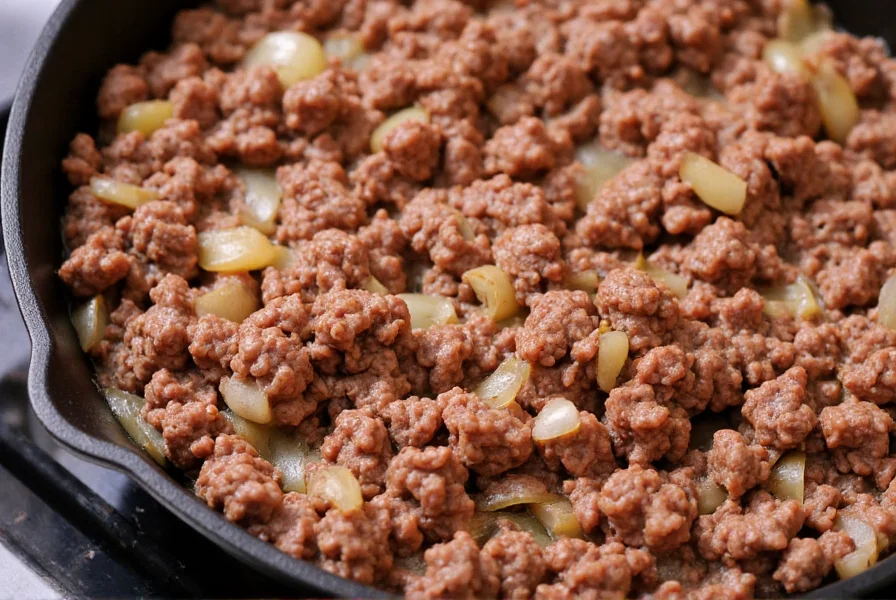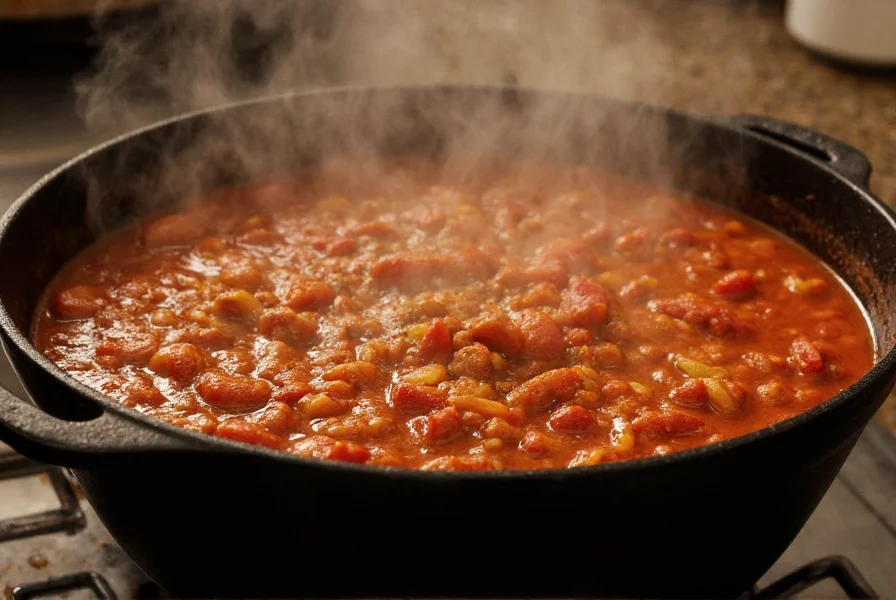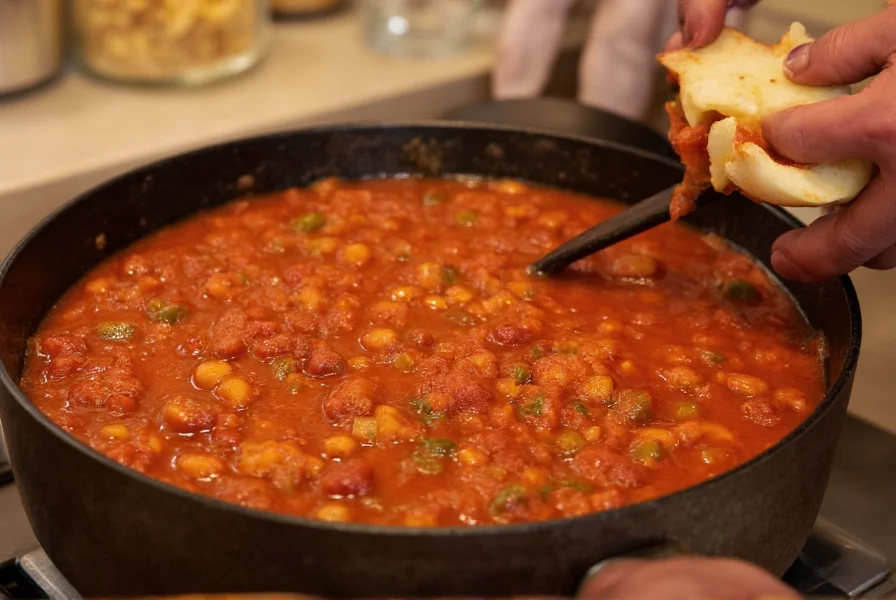The most effective way to make chili involves browning meat thoroughly, using a balanced spice blend of chili powder, cumin, and paprika, simmering for at least 90 minutes to develop flavors, and incorporating both fresh and canned tomatoes for depth. Authentic chili contains meat, spices, and liquid without beans (though bean variations are popular), with cooking times ranging from 2-4 hours for optimal taste development.
Making chili is both an art and a science that has evolved across American culinary traditions since the 1800s. Whether you're preparing a simple weeknight dinner or crafting competition-worthy chili, understanding the fundamentals transforms good chili into exceptional chili. This guide provides time-tested techniques that work whether you're using a Dutch oven, slow cooker, or pressure cooker.
Essential Ingredients for Perfect Chili
The foundation of great chili starts with quality ingredients. While regional variations exist, these components form the backbone of any successful chili recipe:
| Ingredient Category | Key Components | Why It Matters |
|---|---|---|
| Meat | Chuck roast, ground beef, or turkey | Provides richness and texture; chuck offers superior flavor development |
| Spices | Chili powder, cumin, smoked paprika, oregano | Creates the distinctive chili flavor profile; toast whole spices for maximum impact |
| Liquid Base | Broth, beer, or coffee | Develops depth; acidic components like tomatoes balance richness |
| Aromatics | Onions, garlic, peppers | Builds flavor foundation; cook until completely softened |

Step-by-Step Chili Preparation
Follow these professional techniques to elevate your chili from ordinary to extraordinary:
1. Meat Preparation (The Critical First Step)
Cut chuck roast into ½-inch cubes rather than using pre-ground beef. Pat meat completely dry, then brown in batches without crowding the pan. This Maillard reaction creates complex flavors that ground beef alone cannot achieve. Reserve rendered fat for cooking aromatics—this is liquid gold for flavor development.
2. Spice Bloom Technique
After sautéing onions and garlic in reserved meat fat, add your spice blend and cook for 1-2 minutes until fragrant. This 'blooms' the spices, releasing essential oils and eliminating raw flavor notes. For best results when making authentic Texas chili, use 3 tablespoons chili powder, 1½ tablespoons cumin, and 1 tablespoon smoked paprika per pound of meat.
3. Liquid Ratio and Simmering
Maintain a 3:1 liquid-to-solid ratio. For every pound of meat, use 3 cups liquid (combination of broth and tomatoes). Simmer uncovered for at least 90 minutes, stirring occasionally. The ideal simmering time for deep flavor development is 2-4 hours—never boil vigorously as this breaks down meat fibers too quickly.

Regional Variations and Customizations
Understanding regional styles helps you tailor chili to your preferences:
- Texas Red: Strictly meat, spices, and liquid—no beans or tomatoes. Uses coarse-ground chili powder and beef suet for richness
- Cincinnati Style: Spicy-sweet profile with chocolate or coffee notes, served over spaghetti
- Colorado Style: Chunky meat with green chili peppers, minimal spices
- Vegetarian Chili: Substitute mushrooms and walnuts for meat texture; use vegetable broth and extra beans
Avoiding Common Chili Mistakes
Even experienced cooks make these errors when making chili from scratch:
- Adding cold ingredients: Always bring refrigerated items to room temperature first to maintain consistent cooking temperature
- Over-stirring: Excessive stirring breaks down meat texture; stir only every 15-20 minutes during simmering
- Incorrect spice timing: Add delicate spices like cumin later in cooking to prevent bitterness
- Rushing the process: Authentic chili requires minimum 90 minutes simmering—slow cooker settings should be on low for 6-8 hours
Serving and Storage Guidelines
Proper finishing touches make all the difference in your chili experience. Always rest chili for 15-20 minutes before serving to allow flavors to marry. For optimal results when making chili for a crowd, prepare it one day ahead—flavors deepen significantly overnight.
Store cooled chili in airtight containers for up to 4 days in the refrigerator or freeze for up to 3 months. When reheating, add a splash of broth to restore ideal consistency. Never microwave large batches—reheat gently on the stove for best texture retention.
Perfect Pairings for Your Chili
Complement your homemade chili with these serving suggestions:
- Cornbread with honey butter for classic pairing
- Avocado slices and sour cream for cooling contrast
- Sharp cheddar cheese for texture and tang
- Beer-battered onion rings for texture contrast
- Simple green salad with lime vinaigrette to cut richness
Final Thoughts on Mastering Chili Making
Perfecting your chili recipe requires attention to detail at every stage—from ingredient selection to final simmering. The most successful chili makers understand that patience yields rewards: proper browning, spice blooming, and adequate simmering time transform simple ingredients into complex, satisfying meals. Whether you prefer traditional meat-centric recipes or modern vegetarian adaptations, these techniques ensure consistently delicious results every time you're making chili for family gatherings or casual weeknight dinners.











 浙公网安备
33010002000092号
浙公网安备
33010002000092号 浙B2-20120091-4
浙B2-20120091-4